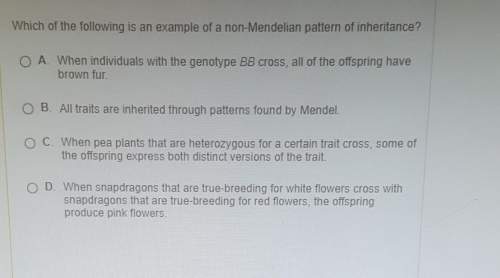
Biology, 04.02.2021 05:40 jaylabazemore
Which sentence best develops the author’s claim about the materials used to make shoes?excerpt from “Shoes: Feet First!”
from A History of Travel in 50 Vehicles
by Paula Grey & Phillip Hoose
Despite the relatively recent age of the early shoes found to date, scientists believe that humans were wearing shoes as much as 40,000 years ago. Shoes made of reeds, papyrus, or even leather decompose easily, leaving few or no traces. But people who don’t wear shoes have wider feet and bigger gaps between their big toe and the other four. In studying bones of the smaller toes of fossilized skeletons, scientists observed that the thickness of these bones decreased somewhere between 40,000 and 26,000 years ago. They believe the change was the result of wearing shoes.
The materials used to make shoes varied with the climate and region. Ancient Egyptians made sandals from papyrus and palm leaves. The Masai of Africa used rawhide; the people of India used wood; and the Chinese and Japanese used rice straw. South Americans wove sandals from the leaves the sisal plant, and the Anasazi people of Mexico and Arizona used the yucca plant. The Dutch developed wooden clogs. People living in arctic climates created snowshoes—a hardwood frame with rawhide lacings—which distribute a person’s weight over a larger area so that the foot doesn’t sink into the snow.
Today, shoe manufacturers use rubber, plastic, cloth, and other materials in addition to leather. Most soles are made from synthetic materials such as ethylene, vinyl, acetate, rubber, and polyurethane, which provide better traction, durability, and water resistance than leather soles. Special shoes are available for running, bowling, and other sports. And shoes are often considered an important fashion accessory.

Answers: 3


Another question on Biology

Biology, 21.06.2019 16:00
Glutamic acid: hydrophilic or hydrophobic? positive, negative, or neutral? valine: hydrophilic or hydrophobic? positive, negative, or neutral?
Answers: 1

Biology, 21.06.2019 19:00
Apea plant that is heterozygous for the tall phenotype can produce short offspring when self pollinating. which of the following explains why this occurs? a. segregation of allels b. condominance of traits c. polygenic expression of traits d. independent assortment of alleles
Answers: 1

Biology, 22.06.2019 04:40
Awoman whose sister tested positive for a specific mutation in the brca1 gene, which increases the risk for breast and ovarian cancer, is found not to have that mutation but does have a mutation of unknown significance near the known mutation site. how should this woman be counseled? select one: a. she should be informed that her risk for breast cancer is greater than the general population but not as great as her sister’s risk. b. she should be informed that because she does not have the mutation, her risk for breast cancer is not greater than that of the general population. c. she should be informed of her gene mutation status and be presented with all the available prophylaxis options and reconstruction options. d. she should be informed that she does not have the specific mutation but that because another mutation is present she should be vigilant about screening
Answers: 1

You know the right answer?
Which sentence best develops the author’s claim about the materials used to make shoes?excerpt from...
Questions

Social Studies, 13.02.2021 03:00








Social Studies, 13.02.2021 03:00

Mathematics, 13.02.2021 03:00

Mathematics, 13.02.2021 03:00

Health, 13.02.2021 03:00

History, 13.02.2021 03:00

Mathematics, 13.02.2021 03:00


History, 13.02.2021 03:00

Mathematics, 13.02.2021 03:00

History, 13.02.2021 03:00

Mathematics, 13.02.2021 03:00

Chemistry, 13.02.2021 03:00




